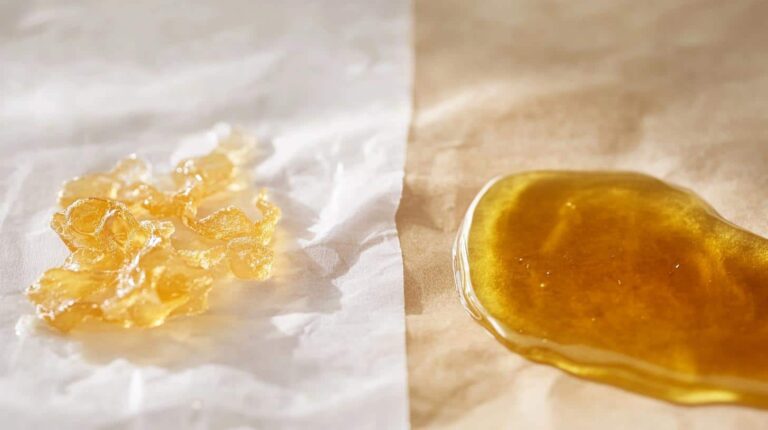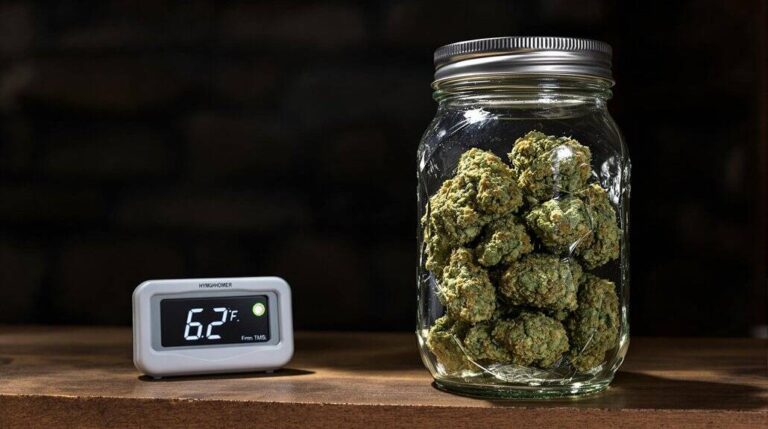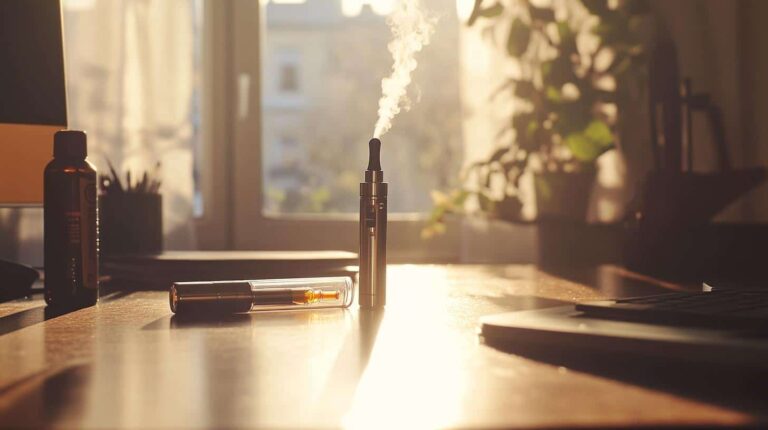Can Weed Cause Vivid Dreams or Nightmares?
The relationship between weed and dreams has puzzled both scientists and users for decades. Many people report drastically different dream experiences when using marijuana, from complete dream suppression to intense nightmares. THC and CBD, the two main compounds in cannabis, affect sleep cycles and dream patterns in distinct ways. The complex interaction between these compounds and the brain’s sleep mechanisms reveals surprising perspectives about consciousness, memory, and the mysterious world of dreams.
Key Takeaways
- THC typically suppresses REM sleep and reduces dream experiences while using cannabis, making dreams less vivid or memorable.
- When stopping cannabis use, users often experience intense and vivid dreams due to REM sleep rebound.
- Cannabis withdrawal can trigger disturbing dreams and nightmares that may last several weeks after discontinuation.
- Medical cannabis can help manage nightmares in PTSD patients, with THC-based medications showing success in treatment.
- CBD maintains normal dream patterns while THC alters sleep cycles and dream experiences significantly.
The Science Behind Cannabis and REM Sleep

While cannabis is often associated with relaxation and sleep, its effects on rapid eye movement (REM) sleep are complex and scientifically documented.
Research shows that THC, the primary psychoactive compound in cannabis, significantly alters sleep patterns by suppressing REM sleep, the phase when most dreaming occurs.
Dream analysis studies reveal that cannabis users experience REM sleep reductions to around 17.7% of total sleep time, compared to normal levels.
Users also take longer to enter REM sleep, averaging 114.5 minutes after falling asleep.
This interference with normal sleep designer can impact dream experiences, though the relationship isn’t straightforward – some users report more vivid dreams despite less REM sleep.
Long-term cannabis use can lead to decreased overall sleep quality and reduced deep sleep duration.
Why Does Weed Affect Dreams So Much?
The relationship between THC and dreaming reveals fascinating neurological patterns worth examining in detail.
Dream analysis shows that THC’s interaction with the endocannabinoid system significantly alters sleep patterns, particularly during REM sleep when most dreaming occurs.
THC increases activity in deep sleep while suppressing REM sleep, leading to fewer and less vivid dreams for most users.
This effect varies among individuals, with factors like dosage and consumption method playing pivotal roles.
While beneficial for those suffering from PTSD-related nightmares, this dream suppression may impact memory consolidation and emotional processing, highlighting the complex nature of THC’s influence on our dream states.
Studies have shown that marijuana use can cause structural brain changes, particularly affecting the prefrontal cortex and hippocampus.
CBD Vs THC: Different Effects on Dream Experiences

Understanding how CBD and THC affect dream experiences reveals stark contrasts between these two prominent cannabinoids.
Dream analysis shows that while THC suppresses REM sleep and reduces dream recall, CBD maintains normal dream patterns while potentially improving sleep quality. Sleep latency decreases with both CBD and THC, helping users fall asleep faster initially.
- THC significantly decreases vivid dreams by reducing REM sleep, often leading to intense “rebound” dreams when discontinued
- CBD doesn’t interfere with REM sleep but may help reduce nightmares, especially in PTSD patients
- While THC users report fewer dreams during use, CBD users sometimes experience enhanced dream clarity without disrupting sleep cycles
These distinct effects make CBD a potentially better choice for those seeking to maintain healthy dream cycles.
Cannabis Withdrawal and Dream Intensity
Discontinuing cannabis use can trigger intense and vivid dreams as part of withdrawal syndrome. When regular users stop consuming cannabis, their dream patterns undergo significant changes due to REM sleep rebound, leading to more frequent and vivid dream experiences. Cannabis Withdrawal Syndrome commonly includes disturbing dreams alongside other symptoms like anxiety and depression.
| Withdrawal Phase | Sleep Disturbances | Dream Intensity |
|---|---|---|
| Early (Days 1–3) | Insomnia, restlessness | Mild to moderate |
| Peak (Days 4–14) | Disrupted sleep cycles | Most intense |
| Late (Days 15+) | Gradually normalizing | Decreasing intensity |
Research shows that over half of cannabis users experience these sleep disturbances during withdrawal, with vivid dreams lasting several weeks as the brain readjusts its natural sleep patterns.
Medical Cannabis for Managing Nightmares

While cannabis withdrawal can intensify dreams, medical cannabis plays a distinctly different role in managing nightmares, particularly for individuals with PTSD.
Research shows the medical benefits of cannabis treatment in reducing nightmare frequency through REM sleep suppression. THC-based medications have demonstrated significant success in treating persistent nightmares. Sleep quality improves with cannabis use, as 80-90% of PTSD patients typically experience sleep impairments.
- Studies indicate a 20% or greater reduction in PTSD symptoms for 65% of patients using medical cannabis
- Synthetic cannabinoids like Nabilone effectively decrease nightmare intensity
- Different cannabis strains offer varying levels of effectiveness for sleep management
Clinical evidence supports cannabis as a therapeutic option for those suffering from chronic nightmares, though more research is still needed.
Long-term Effects of Cannabis Use on Sleep Cycles
Long-term cannabis use significantly alters natural sleep patterns in complex and often problematic ways. Research shows chronic users experience decreased sleep efficiency and disrupted sleep cycles over time. Dream analysis reveals that while cannabis initially suppresses REM sleep, withdrawal often triggers intense, vivid dreams as the brain rebounds.
Sleep patterns undergo notable changes with extended use, including longer times falling asleep and frequent nighttime awakenings. The body develops tolerance to cannabis’s sleep-inducing effects, leading users to require higher doses. When someone stops using cannabis, these disruptions can persist for up to seven weeks, affecting both sleep quality and overall rest.

Final Thoughts
Weed has complex effects on dreaming through its influence on sleep cycles and brain chemistry. While THC generally suppresses dreams by reducing REM sleep, CBD helps maintain normal dream patterns. Cannabis withdrawal can trigger intensely vivid dreams as the brain readjusts. For some, particularly those with PTSD, medical cannabis offers relief from chronic nightmares. Understanding these effects helps users make informed decisions about cannabis use and sleep management.
Frequently Asked Questions
How Long Does It Take for Dreams to Return to Normal After Quitting?
Dream duration varies as brain chemistry adjusts, with most people experiencing intense dreams for 2-6 days after quitting. Full normalization typically occurs within three to four weeks.
Can Smoking Weed Right Before Bed Prevent All Dreams Completely?
While cannabis can cause significant dream suppression through altered sleep patterns, research indicates it cannot completely prevent all dreams. Some dreaming still occurs, even with reduced intensity.
What’s the real connection between weed and dreams?
Cannabis can suppress or intensify dream experiences depending on how it’s used. Weed and dreams are closely linked through REM sleep changes caused by THC and CBD.
Is There an Ideal Time Gap Between Smoking and Sleeping?
Research hasn’t established a definitive time gap between smoking and sleeping. Individual factors influence sleep quality and dream intensity, though allowing 30 minutes for THC absorption may be beneficial.
Can Mixing Weed With Other Sleep Aids Intensify or Reduce Dreams?
Combining cannabis with sleep aids can intensify sleep disruption and affect dream enhancement differently for each person. Limited research suggests these combinations may further suppress REM sleep and dream experiences.







